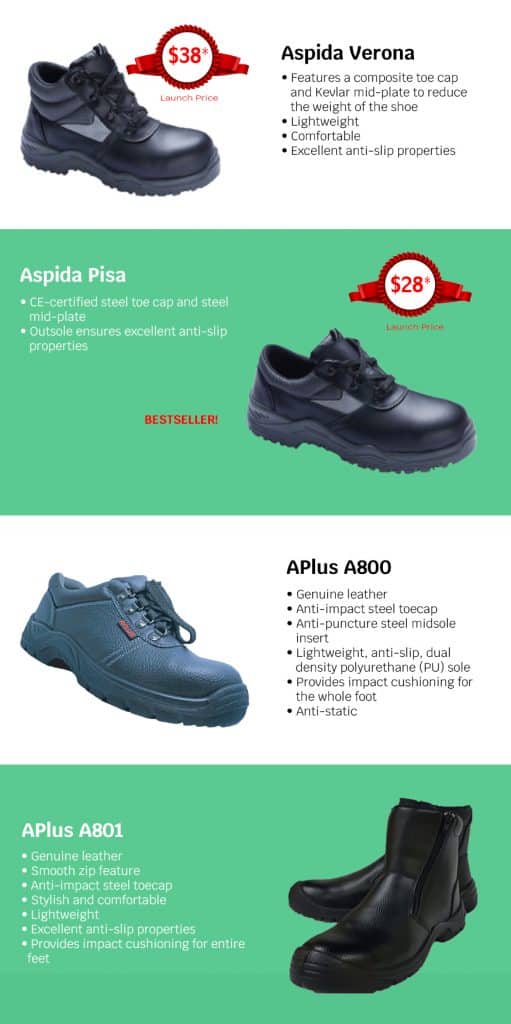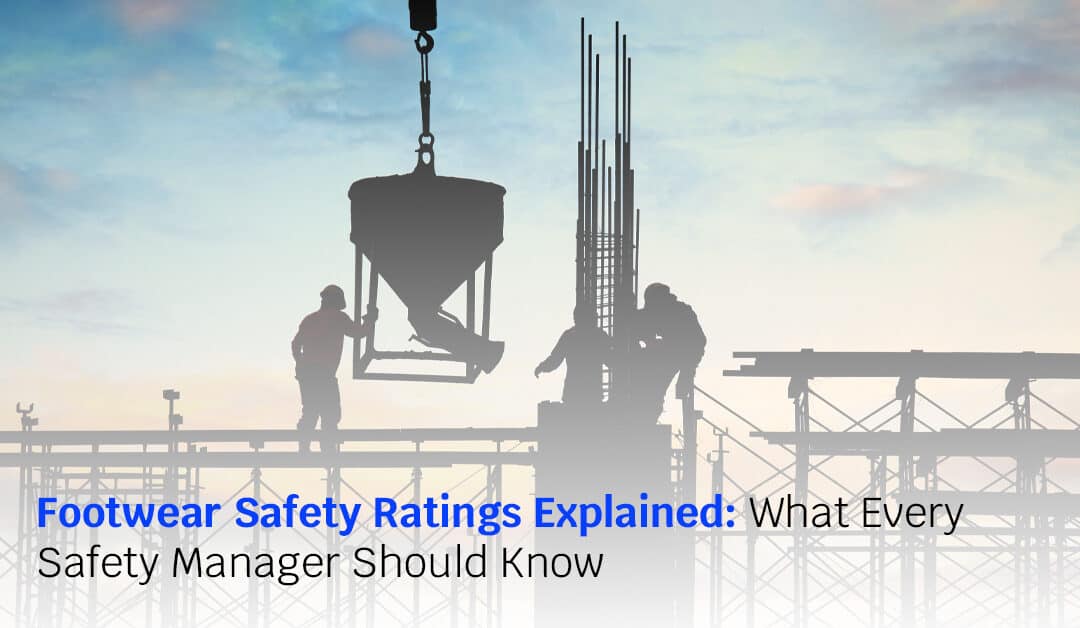Safety shoes are one of the most important PPE for workers across all industries, designed to protect the feet against a wide range of injuries. Safety footwear must comply with the right standards, providing 360-deg protection, and should be appropriate for the environment.
The risks for foot injury are extremely high regardless of the workplace. According to HSE, slips and trips account for 31% of work-related injuries. Which is why a good safety footwear must meet the required safety standards from the International Organisation for Standardisation (ISO).
What are the standards?
Here are the most prominent standards for protective footwear.
EN ISO 20345-11
This safety footwear standard defines the basic and other requirements for commercial purposes. According to EN ISO 20345-11,
• The footwear must safeguard the users against crushes, bumps, falls and rolling objects, from walking into sharp or pointed objects, heat or cold, and hot substances
• All safety shoes must have the right front foot protection against a 200 joule impact. A joule is defined as the amount of energy exerted that the toe region can absorb before breaking.
• Safety shoes shall be tested on all possible aspects and will be granted an S-class. Safety levels are based on various S-classes
• SRA: Footwear is tested with NaLS Lubricant on tiles for anti-slip resistance
• SRB: Footwear is tested with glycerol lubricant on steel for anti-slip resistance
• SRC: Footwear is tested with both SRA and SRB lubricants for anti-slip Resistance in accordance to ISO 20345
• HRO: Heat Resistant Outsole Safety Footwear
ASTM 2413-17
This safety standard is from the American Society for Testing and Materials (ASTM), an international body that develops and publishes voluntary consensus technical standards or certifications.
In 2005, ASTM announced that its ANSI standard was replaced by 2 new ASTM standards called the F213 Standards for Performance Requirements and F2412 Standards for Foot Protection Test Methods.
According to ASTM 2413-17,
• The outsole must be insulated for electric shocks.
• The toe area must have impact and compression, and puncture resistance and more
Singapore Standard SS 513:2005 (ISO 20345:2004)
This safety standard details the requirements and testing methods for safety shoes.
Top Safety Footwear
These safety shoes are designed to fit workers’ feet, preventing foot-related hazards and increasing efficiency.




Recent Comments